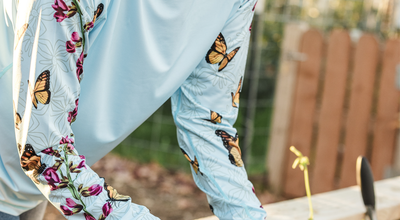How to Protect Your Garden From Cold Weather & Frost
Now that we can officially say the cold weather is here, it’s essential to know how cold and frost can affect your plants. One sudden cold snap can wipe out all your hard work.
There are many methods to protect plants from the cold. For some quick ways to protect plants, bring the plants inside or put them under a covering. This reduces frost damage.
You’ll need to cover plants that are seedlings, perennials, and tropical and subtropical plants.

What can your plants tolerate?
When freeze warnings threaten, you need to know the point at which most plants freeze. If temperatures stay at or below 28°F for several hours, you’re in trouble.
Seedlings are some of the most vulnerable, unable to grow when temperatures drop below 32-33°F.
Tropical plants also have low-temperature thresholds as well. Some become limp when temps fall to 40°F.
To find the threshold for your plants, search garden books and online resources.
Other factors to consider
On a cloudy night, there’s more insulation in the atmosphere, so there’s less chance of things becoming frozen. Conversely, on clear and cold nights, moisture escapes more easily.
Methods to keeping your plants warm
Using a Large Blanket
Larger groups of plants can be easily covered using blankets, bed sheets, towels, or tarps.
Before laying down the fabric, place several stakes around your plants to create a tent-like structure when you cover them.
Make sure to plant some stakes in the ground high enough to pitch the covers well above the plants, so they do not become smothered.
Utilizing mulch to keep soil warm
Adding mulch to regulate soil temperature is one of the best methods of keeping your plants protected from frost and cold at night. Apply dry mulch, such as chipped bark, straw, or old leaf piles.

Extra Plastic Covering
For extra frost protection, an old shower curtain would work perfectly.
The only trick with this method is making sure the plastic does not touch the plants, as the material may cause damage to your plants.
One additional precautionary measure is to weigh down the coverings with heavy stones or bricks so potential wind in the night doesn’t blow your coverings away.
Make sure to remove the coverings first thing in the morning so the plant can breathe and become warm again in the daylight.

Utilizing water to regulate temperature
Watering plants just before sundown will help regulate temperatures at night. Keeping the water warm in sunlight during the day will help with this process. Watering in the morning is also helpful because wet soil absorbs heat during the day, insulating the plants.












